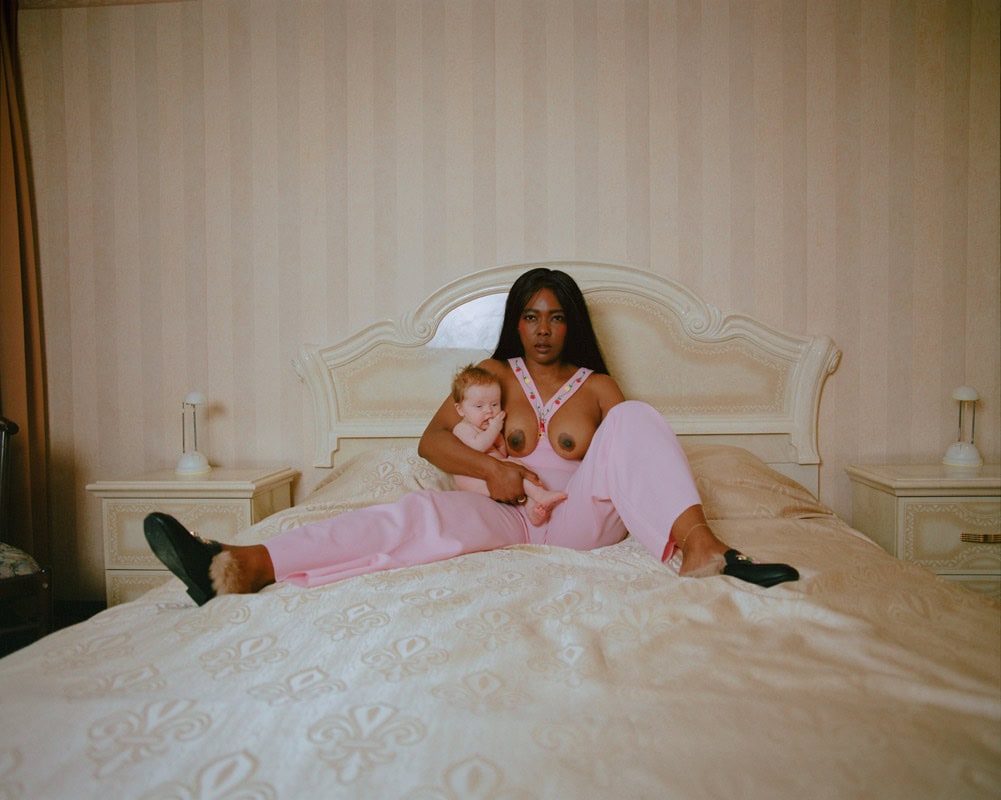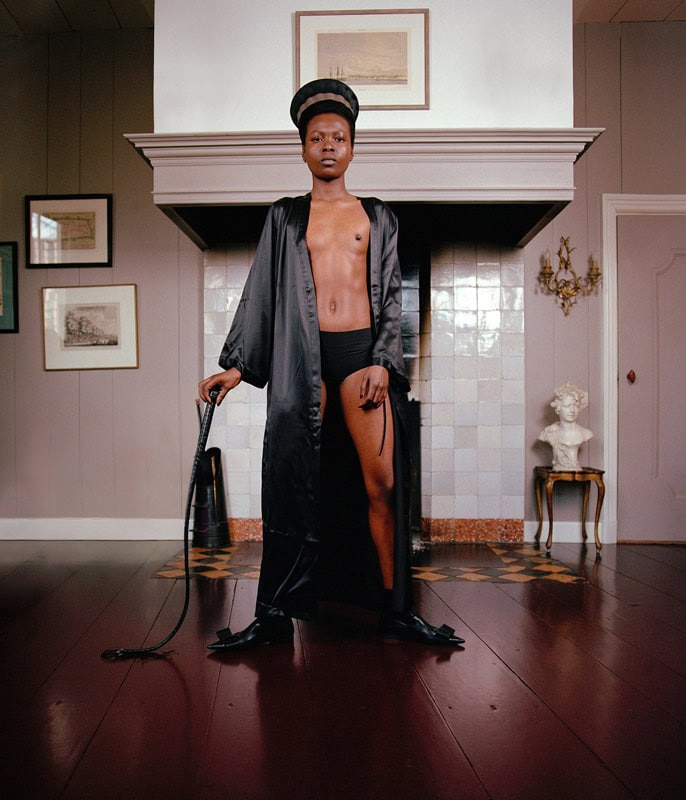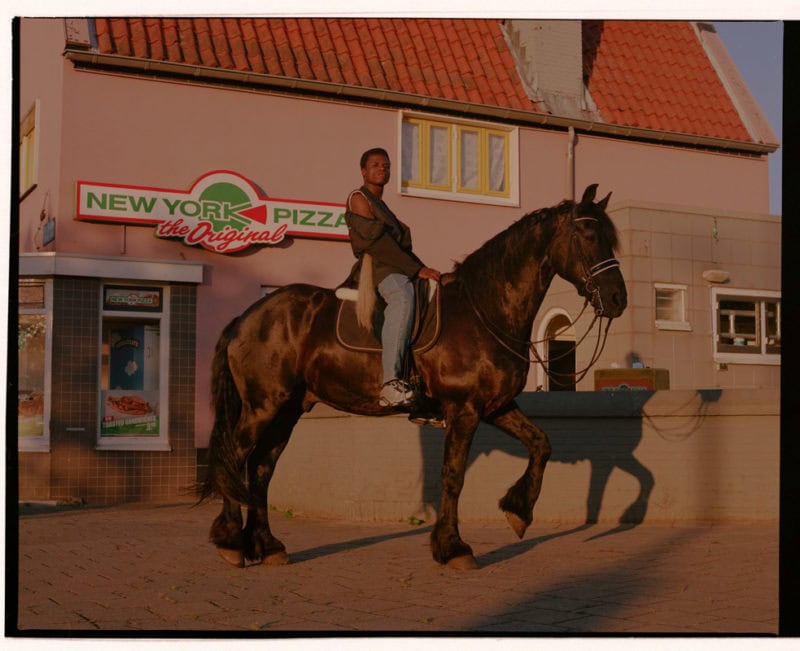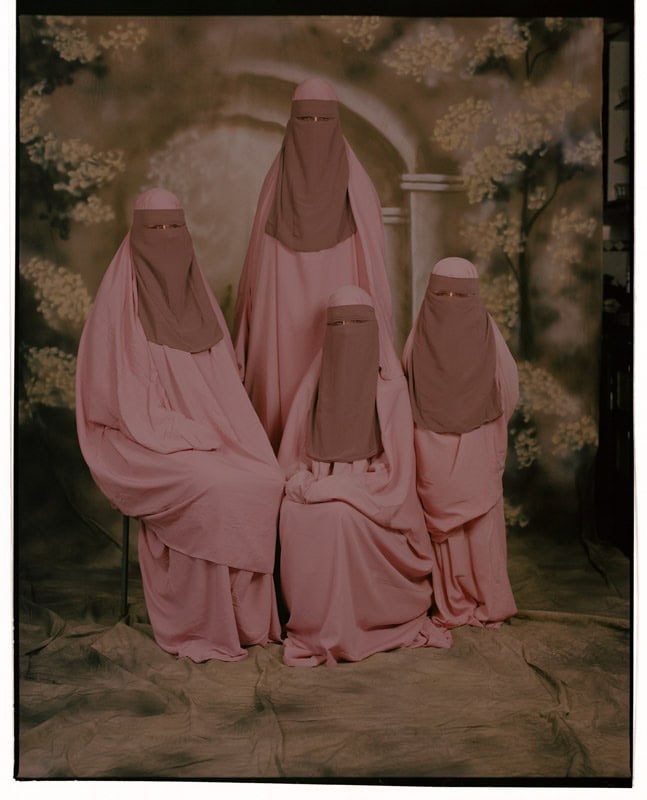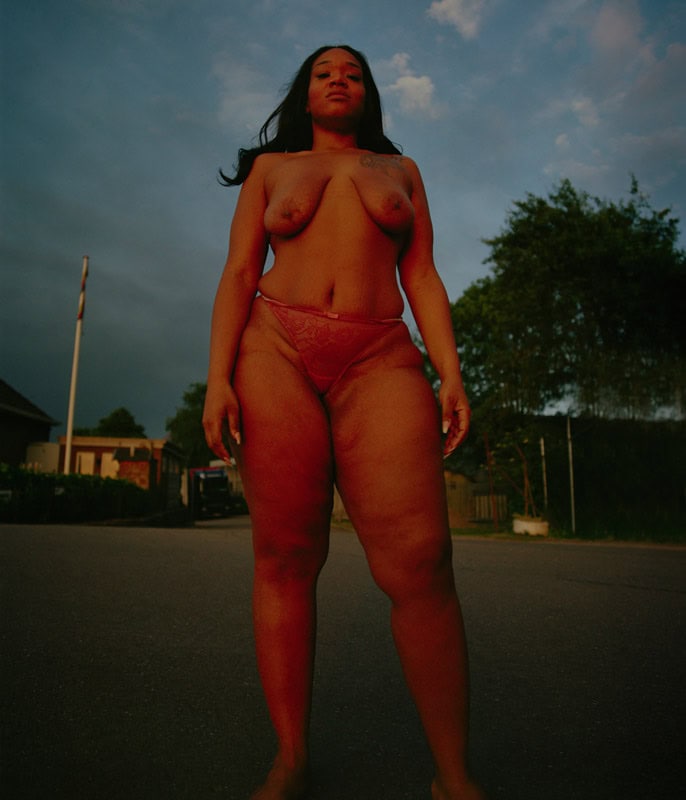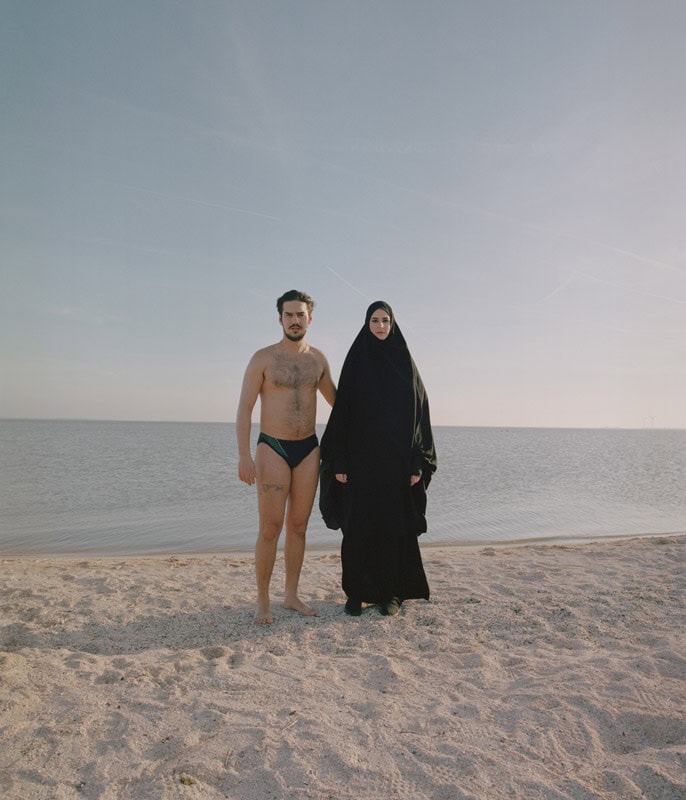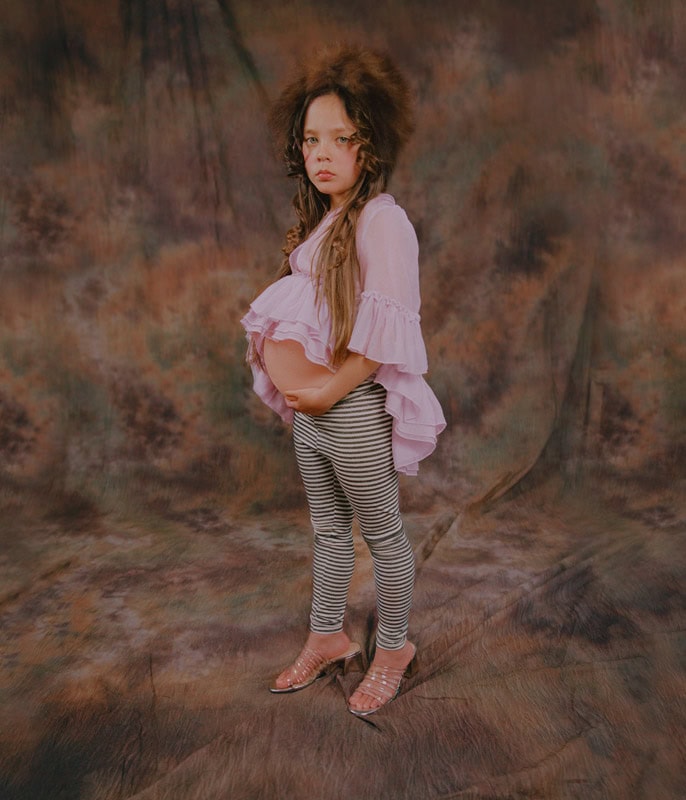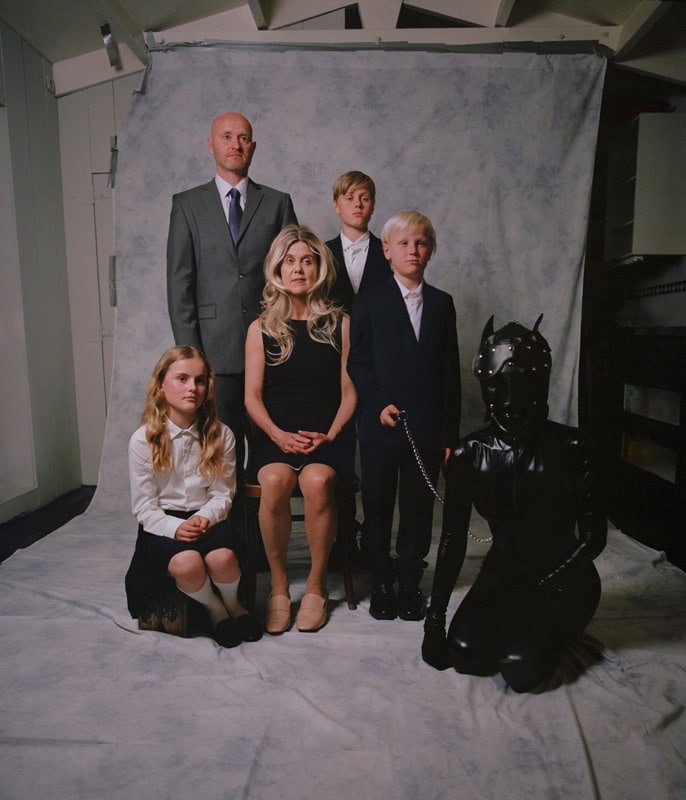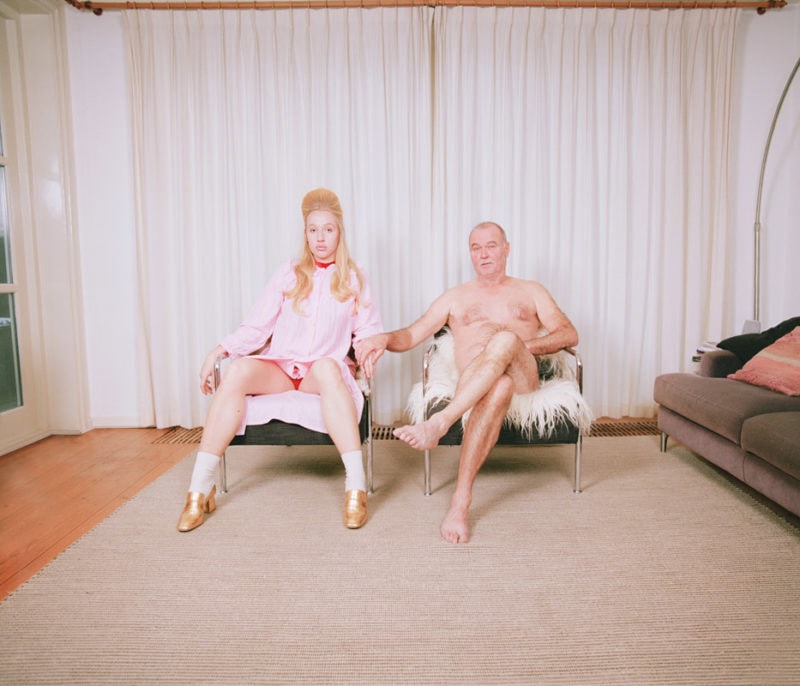Jaimy Gail says about herself:
“My name is Jaimy Gail, 27, born and raised in Amsterdam and 2 years ago I graduated at the Royal Academy of Fine Arts in The Hague within the department of photography. I call myself a fashion photographer, but my work sits somewhere between fashion, documentary and portraiture.
When I first started at the art academy my speciality was painting so I applied within that field at the Gerrit Rietveld Academy. I switched pretty drastically towards photography even though I had zero experience with it. There were several reasons why I made that decision, but the one that stood out was that I felt my paintings were fine but didn’t have a huge impact on me. I wanted to get my drawing skills towards the next level and suddenly this unfamiliar medium of a camera got my attention. I couldn’t figure out why I’d never thought of it before and since that moment when I got accepted at the art academy in The Hague I knew I had found my new obsession that I had to figure out from scratch. I think you can still recognize elements of drawing and see the fact that I first mastered the art of painting before I took on photography in my work. For me the camera is a tool to start with a blank canvas which I can carefully fill in by constructing this image/concept I have in mind. I always draw the image first before shooting. The cool thing about photography, which for me lacked within drawing, is that with drawing I could draw everything I want, but when I added something truly strange in a photograph I was suddenly able to change reality. This is the main reason I love photography. Changing reality in turn has become my main focus as I’m creating works that are not reality nor fiction. It enables me to work within a grey area that isn’t reality nor fiction, it’s something new and undefinable.
In general my work leaves you with a feeling of confusion. The aim of my images is to first make the viewer comfortable with familiarity, usually applied through aesthetic choices, such as using an old-fashion style of light, setting and pose. The next step is to shift the viewer out of this mindset once they look a little closer, maybe through a particular prop choice or hidden motif.
Sometimes my work can feel a bit abrasive as it’s also political and socially issues to it, but I try to only start a discussion, not pretending to have a solution. I’d say that my photography raises a lot more questions that it provides you with answers. My purpose is not to teach or to show the world the way I feel about the subject, it’s just a different angle looking towards a topic. Alienating it, while at the same time, making it strangely familiar.”
About ‘Normaal Doen‘ – words by Jaimy Gail:
One of my projects which executed this aim in particular is the series Normaal Doen in which I photograph the concept of normalcy. It’s a project borne out of a comment made by the Dutch prime minister, addressing the public to ‘act normal’. It’s a project that changed overtime as it grew bigger and turned out to be this ongoing project that is really dear to me.
It began in january 2017 the Dutch Prime Minister wrote a letter addressed to it’s Dutch citizen to ‘Act normal, or piss off/leave the country’ (Doe normaal of rot op). This might look like a pretty meaningless phrase when Dutch isn’t your native language and maybe at first it feels like there is not much to argue about; I’d think everybody feels one should act normal until a certain point right? And although the letter had some commotion in The Netherlands it soon kind of faded, still to me it had e a huge impact and couldn’t let go of what he was suggesting. Of course as a Dutch woman I’m very known with a calvinistic approach towards behavior and it’s almost culturally determined that the Dutch phrase ‘Doe maar normaal dan doe je al gek genoeg’ ‘Act normal that is already crazy enough’ almost is the fundament of Dutch culture. Still, in the letter of the Prime Minister there is an underlying tone of excluding without really saying anything.
So I asked myself what it is, acting normal? How did it look like?
What I did is I wanted to see if I could alter his message of acting normal and make it visual. But leaving the message of the images as open as our Prime Ministers letter.
To start of this project I needed guidelines to narrow the subject of normalcy down. Beginning by looking at the definition of the norm, I realised that it’s a concept based on several factors, whether it be an individual’s gender, nationality, religion or culture. These factors are very personal thus what one considers normal is extremely personal. With this definition I wanted to use an imagery that is as ‘normal’ as it can be, as in that it’s recognizable to all of us. I decided that my foundation should be the classical home situation and the accompanying imagery of the family photos. Within that almost predictable image I wanted to raise questions and change the meaning of it. The essence of the “Normaal Doen” series lies within this confusion. Rationally I know what is asked of me, somehow I know how to behave within these socially accepted boundaries, but emotionally I do not. Emotionally I have questions about the fundamental lines of these boundaries. Who wrote them anyways? The aim of this series is to find out where the fine line is within the norm or maybe even my own norm which makes it very personal. For the first time I had to question my own norm and therefore my own person which was as I mentioned white, female, dutch. In the beginning as it was in a way a reflection of myself the focus in the portrait is mainly on women and the position of women. As a result some of the images may be difficult to look at as women are photographed in a certain way that might feel sexist, or inferior, to the setting they are photographed in and this is deliberate. I’m stereotyping women the same way I’ve been thought of by popular culture, the country I was born in and maybe even by my parents. Later on I expanded the series as I had written a thesis on the subject therefore leading the series to become more political and less about the stereotyping of women.
In turn the series now harks back to this original comment by the Netherland’s prime minister, creating a visual interpretation of the Dutch calvinist notion of being normal. My aim with the series is to remind viewers and the prime minister that the Netherlands is a multicultural society which is rich and complex. It’s all about human relationships, standards or expectations on how to behave, dress or what’s expected within a relationship from family to friends. These are all constructs by society and maybe demanded by you.
What I like about the series is that it reveals that every observer has a different limit concerning what is “normal” and what is “not normal”. This makes it so personal to every viewer. I try to stretch conventional boundaries within my “bubble of truth” and see what happens.
The series presents my aim of utilising photography to alter discussions. Broadly, my work is about social issues I see on the street, television or politics where of course I have an opinion on, but find it hard to enter the discussion. My way of dealing with those issues is frankly to put it into an image.” And while the project has changed over time. You could also see how it truly reflects the images I’m dealing with at a particular time. In that sense, the project is a reflection of me.
